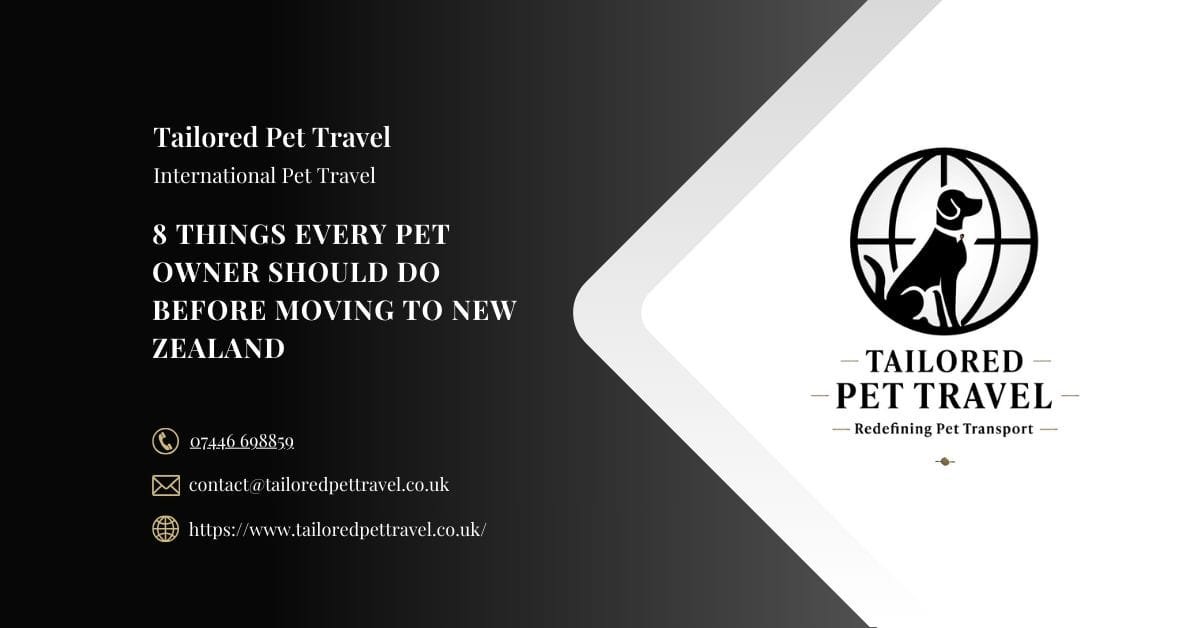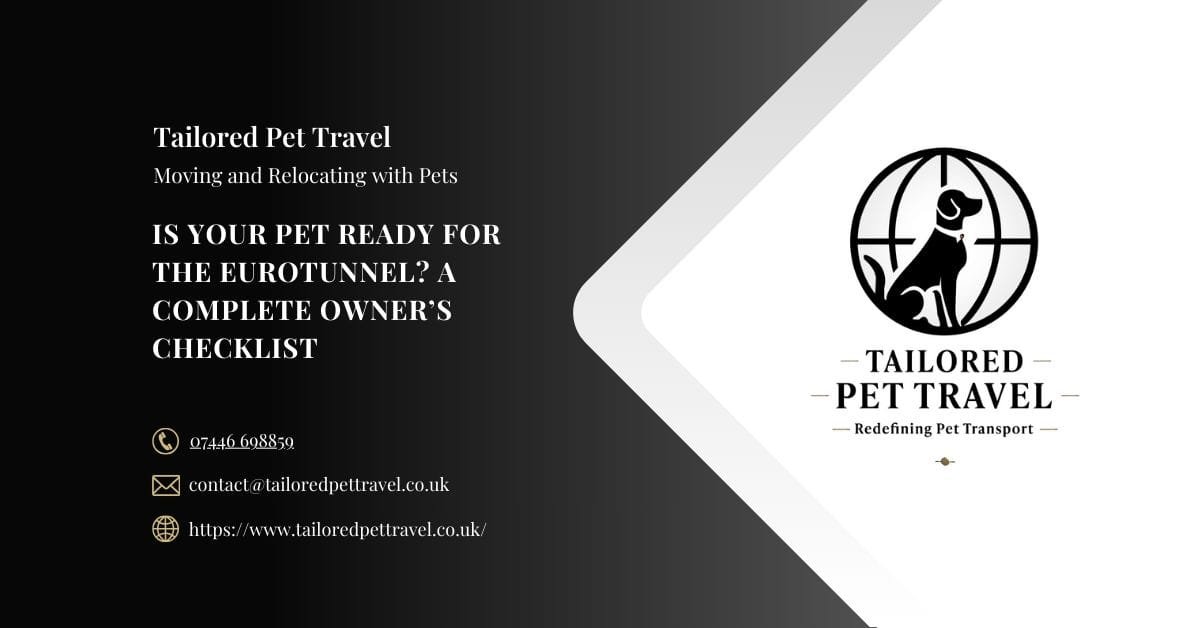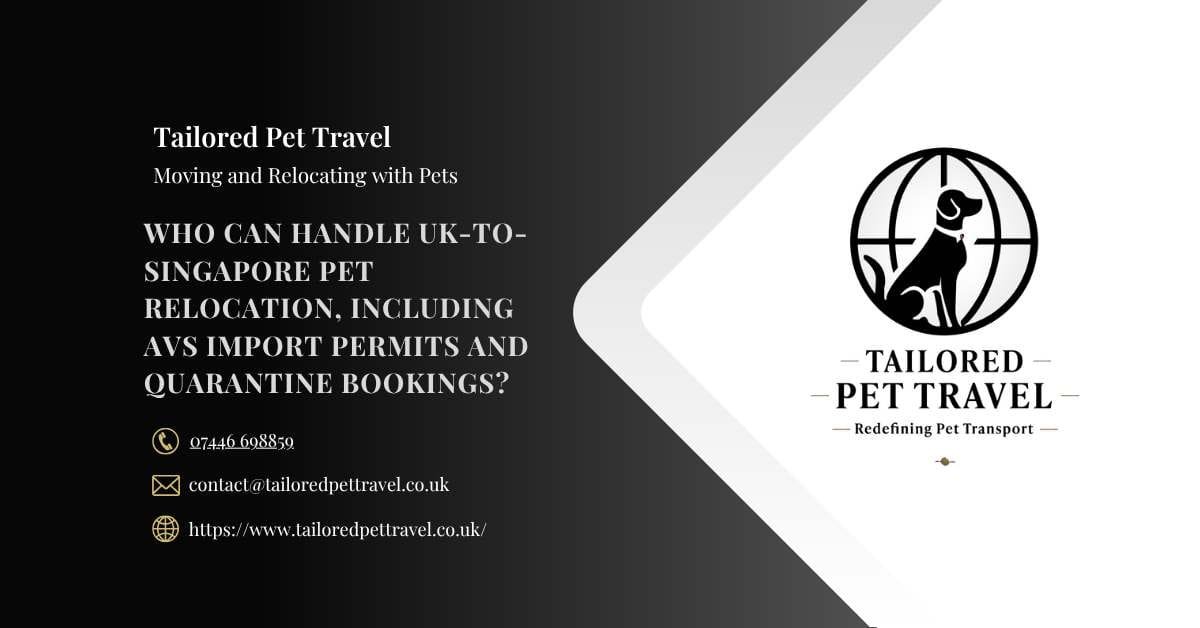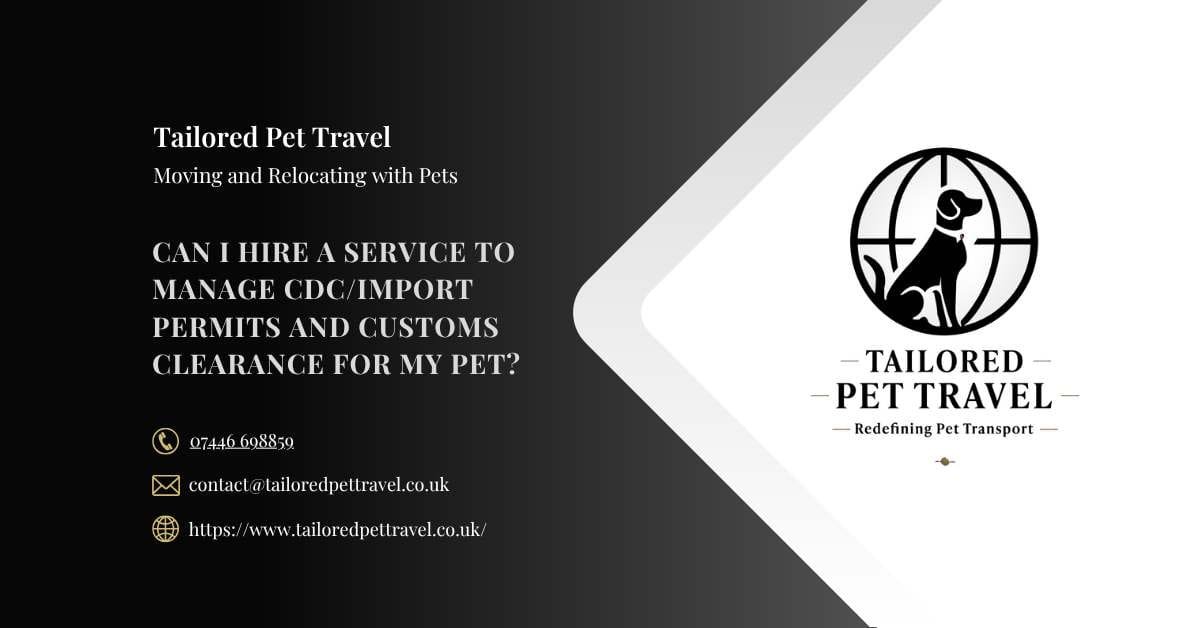Is it safe to travel internationally with a senior dog, and how do you know if your dog is ready?
More senior dog owners are choosing to relocate abroad with their dogs, but making that choice responsibly means getting proper vet advice, planning with care, and understanding your dog’s physical and emotional needs. Travelling internationally with an older dog is possible, but it takes thought, preparation, and flexibility to make it safe and comfortable.
Here's What We Have Covered In This Article
1. Why Senior Dog Travel Is Rising and How to Know If Your Dog Is Ready
The emotional connection driving senior pet travel
Senior pet travel is increasing in the UK and globally, as more expat pet owners refuse to leave their companions behind. Retirement relocation with pets is a major driver, particularly among older adults seeking to spend their later years abroad. For many, these dogs are long-time companions, and the idea of separation is deeply emotional. Bringing them along isn’t just a preference – it’s a non-negotiable part of the move.
Real-life travel inspiration: Meet Schnitzel
Take Schnitzel, a 12-year-old dachshund who moved from New York to Portugal with his retired owner. Chronicled online, Schnitzel’s travel story shows what’s possible with thoughtful planning, including a comprehensive vet exam, dog travel health certificate, crate familiarisation, and senior-friendly accommodation. His experience has inspired thousands of older dog owners to plan safe relocations.
Why a geriatric vet exam is non-negotiable
Before anything else, book a geriatric dog checkup. Your vet will examine your dog’s mobility, breathing, heart function, and identify any chronic condition flags such as arthritis, kidney disease, or early signs of cognitive decline. This exam helps you decide if your dog is fit to travel and is essential to obtain a valid dog travel health certificate. Without vet clearance, many airlines and countries will deny boarding or entry.
Spotting the signs your senior dog may not be ready
Even if your dog is emotionally attached to you, they may not physically tolerate long travel. Warning signs include laboured breathing, confusion or disorientation, incontinence, extreme anxiety, or an inability to tolerate crate confinement. Dogs with chronic pain or significant mobility issues may need to remain at home under the care of someone trusted. Always weigh your dog’s wellbeing over your travel plans.
Readiness checklist for pet relocation with older dogs
A good rule of thumb is to work through a checklist:
-
Recently passed a full geriatric vet assessment
-
Eats and drinks normally without medication
-
Comfortable resting in a crate for extended periods
-
No recent collapses, seizures, or respiratory distress
-
Can handle moderate environmental changes
-
Not showing signs of dementia or anxiety triggered by travel sounds
This checklist helps you and your vet make a joint decision around dog travel readiness.
Pro Tip: Choose flight times that match your dog’s sleep schedule to reduce anxiety during travel.
Need Help Relocating Your Senior Dog?
Our expert pet relocation team handles every detail from crate fitting to vet clearance so you don’t have to stress
2. Preparing for Safe and Comfortable Travel
Crate training for calm travel
Older dogs often dislike change. That’s why crate training must be introduced gradually. Begin weeks or even months before the trip using positive reinforcement and regular routines. Familiar bedding, a blanket with your scent, and short trial stays in the crate help them build comfort. This is especially useful for stress-prone pets.
Picking the best IATA-approved crate
An IATA kennel is required for air travel, and the right one makes a world of difference. Look for size that allows standing, turning, and lying flat, with strong latches and solid ventilation. For senior pets, an extra layer of memory foam or vet-approved orthopedic bedding adds significant comfort. Avoid crates that are too tight or overly ventilated in colder climates.
Natural calming aids, not sedatives
To reduce pet anxiety travel risks, vets often recommend pheromone sprays like Adaptil or herbal calming chews containing L-theanine, chamomile, or valerian root. These help ease anxiety without suppressing the central nervous system. Avoid sedatives, which can affect respiration and awareness, especially in high-altitude environments. Always test calming products at home well in advance.
Alternatives to air travel for sensitive dogs
Not every senior dog should fly. Depending on your route, alternative pet transport options such as ferry, train or driving may offer more comfort. These allow more breaks and give you better control over temperature, rest periods and proximity, which is especially important for older pets with chronic health needs or travel anxiety.
Using desensitisation to reduce stress
Desensitisation routines help senior pets feel in control. Simulate travel conditions at home – from crate time with background travel noise to brief car trips and feeding in the crate. Gradual exposure reduces overstimulation and improves resilience. Tools like comfort wraps or thunder shirts can add reassurance.
3. Packing Smart and Staying Organised
Essential packing list for senior dogs on the move
When travelling abroad, packing well is crucial. Here’s a basic travel bag for dogs that covers comfort and health:
-
Pre-measured portions of familiar food
-
Water and collapsible bowl
-
Blanket or item that smells like home
-
All medications with clear labels and vet notes
-
Emergency contact details for your UK vet and destination vet
Managing medication and health care abroad
Medication should be packed in secure daily organisers. Include clear instructions, your vet’s contact information, and refill notes. Always carry extra in case of flight delays. Make sure your destination allows entry of that specific medication or has alternatives available locally.
Keeping digital and printed documents accessible
Having both digital and physical records makes border crossings smoother. Keep printed copies in a waterproof folder, and store digital backups in a cloud service like Dropbox. These should include your dog’s travel health certificate, microchip number, recent blood tests, and vaccination records.
Comfort items to soothe anxiety
Older dogs thrive on familiarity. Bring items that carry your scent, such as a worn T-shirt, their favourite soft toy, or a sleeping mat they already use at home. These familiar items can reduce anxiety in strange environments and improve sleep quality.
Feeding and hydration tools
Stick to the feeding schedule your senior dog is used to. Bring enough of their regular food to last the trip and transition if needed. Avoid sudden changes in diet to prevent upset stomachs. Use travel-friendly water dispensers and bowls to keep them hydrated throughout the journey.
Worried If Your Dog Is Fit to Fly?
Get a personalised travel-readiness checklist for your senior dog based on age, breed, and health needs.
4. Choosing Pet-Friendly Destinations and Accommodation
What features should you look for in a senior dog-friendly travel destination?
Senior dogs often benefit from flat paths, cooler climates, and restful areas. The best travel destinations offer easy walking terrain, mild weather, and access to veterinary care nearby. Coastal towns with level promenades or rural areas with grassy trails often suit older pets best. Overcrowded cities or steep mountain regions can become tiring for dogs with reduced stamina or arthritis.
Before you travel, check if your destination has a local veterinary practice or emergency clinic. Save their contact details to your phone and map out how to get there. Use platforms such as FirstVet or PawSquad for digital support from UK-licensed vets during your trip. These services are useful if your dog has a health condition that may need remote advice. It is also worth checking for clinics that specialise in geriatric veterinary care or have experience with international pet travel.
Breed-specific factors should also be considered. A Labrador or retriever may cope differently to a dachshund or pug. Larger breeds may start slowing down by age six or seven, while smaller breeds might remain active into their early teens. Knowing your dog’s breed-related ageing patterns can help you select a travel destination that suits their energy and mobility.
What makes accommodation suitable for senior dogs?
Accommodation should have step-free access, be on the ground floor, and allow space for your dog to rest comfortably. A private garden or enclosed outdoor area helps with regular toilet breaks and offers a secure space for your pet to relax. Avoid properties with steep internal staircases or open balconies without barriers.
When booking through hotel websites or platforms like Airbnb, apply the pet-friendly filter. Always contact the host to confirm pet policies, garden access, and potential cleaning fees. Look for accommodation reviews that mention pets positively.
Hotels with dog-friendly policies sometimes offer added touches such as water bowls or dog beds. However, the location of the room and ease of access are more important for older pets. Quiet rooms close to exits or lifts can help minimise stress and walking strain.
If your senior dog shows signs of incontinence, bring protective bedding or crate liners to use during overnight stays. These small comforts can reduce discomfort and mess.
Safe and suitable activities for older dogs while travelling
Choose calm, low-impact activities. Public parks with benches, woodland paths with even ground, and beach walks with soft sand are ideal. Avoid long or rugged trails, especially if your dog shows signs of joint discomfort or reduced mobility.
Walk your dog early in the morning or after sunset in warm climates to reduce the risk of heat stress. Always carry water and a collapsible bowl. Shaded areas and cooling mats can also help dogs that are heat sensitive. Follow leash regulations in public areas and respect local rules about off-lead access.
Booking flights outside peak heat or cold hours can also reduce the physical strain on older pets. Avoid midday flights in summer and very early departures during cold months.
If you’re travelling during the summer season, internal linking opportunities can naturally include phrases such as [“travelling with dogs in summer”] to guide readers to climate-specific advice.
Pro Tip: Always label medications clearly and place them in a sealed pouch attached to the crate with dosage instructions.
5. Safety Nets: Emergency Planning and Real-World Adaptability
How do you prepare for emergencies while travelling with an older dog?
Researching local veterinary services in advance provides reassurance in unfamiliar locations. Find a 24-hour vet near your accommodation and save their address and phone number. The Royal College of Veterinary Surgeons has a searchable directory for UK vets. For international travel, check online maps for clinics with verified reviews and animal hospital facilities.
Apps such as Joii Pet Care and PawSquad offer consultations with UK-registered vets through your phone. These are helpful if you’re far from a clinic or your dog has a manageable but recurring condition that may require advice or medication adjustment.
Make sure your travel route includes airports and airlines that are pet-conscious. Some allow medication travel kits to be stored with the crate and include instructions in case airline staff need to assist during a delay.
Do you need pet insurance for international travel?
International pet insurance can protect you from costly treatment fees abroad. Choose a policy that includes cover for chronic conditions, emergency surgery, and direct vet payments. Policies that include access to UK vet helplines or cover for specific countries are useful for longer trips.
Keep printed and digital records of your dog’s medical notes. Include vaccination proof, prescriptions, microchip registration, and recent test results. Store them securely and upload backups to a cloud platform like Google Drive.
Hiring a professional pet relocation service can also reduce risk. These companies often have direct access to customs officers, veterinary contacts, and updated international animal transport rules, which is especially helpful when managing an older pet’s specific needs.
How can you adjust travel plans to meet a senior dog’s needs?
Senior dogs may tire easily or become unsettled if schedules are too busy. Watch for changes in behaviour like increased panting, slower walking pace, or reluctance to leave their bed. These signs suggest your dog needs extra rest or quieter surroundings.
Plan fewer outings each day and keep walks short. Returning to your accommodation for a break after morning activities can make afternoons calmer. Keep feeding and medication schedules consistent to help your dog stay settled.
Where possible, align flight times and activities with your dog’s existing daily routine. Travelling during their regular rest period reduces stimulation and increases the likelihood of calm behaviour in transit.
What should your care plan include in case of illness or delay?
A written care plan should include your dog’s feeding routine, medication instructions, allergy information, and emergency contact details. Share this with a trusted friend, family member, or local sitter who can step in if you are delayed or unwell.
Identify local pet sitters or boarding facilities near your travel location. Some vets can suggest trusted sitters or may offer short-term boarding. Confirm availability before your trip begins so you’re not left without support.
With sensible planning, simple adjustments, and supportive backup plans, senior dogs can continue to enjoy life abroad by your side. You know your dog better than anyone else, and with that insight, you can help them travel comfortably and safely.













